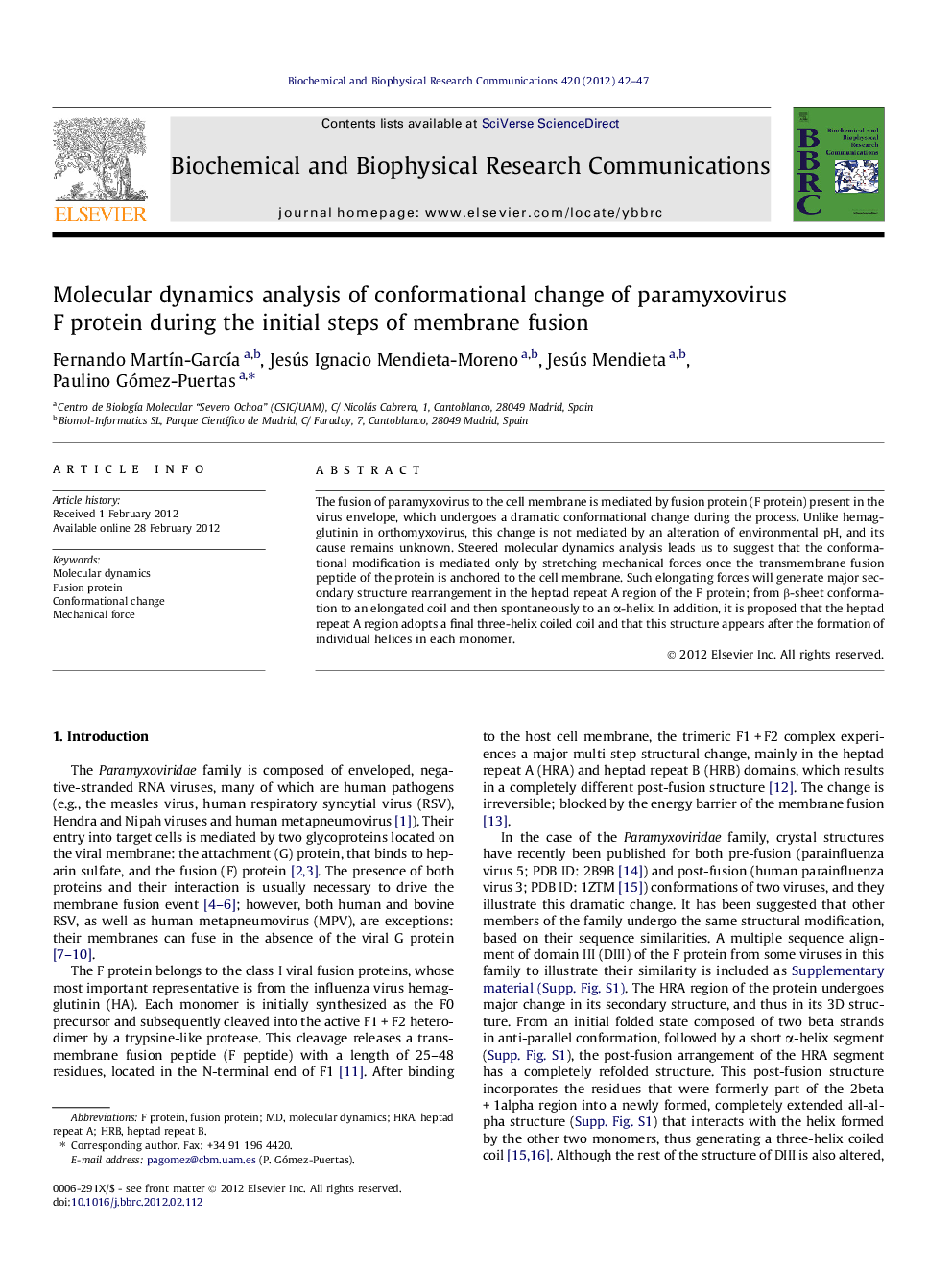| Article ID | Journal | Published Year | Pages | File Type |
|---|---|---|---|---|
| 1929842 | Biochemical and Biophysical Research Communications | 2012 | 6 Pages |
The fusion of paramyxovirus to the cell membrane is mediated by fusion protein (F protein) present in the virus envelope, which undergoes a dramatic conformational change during the process. Unlike hemagglutinin in orthomyxovirus, this change is not mediated by an alteration of environmental pH, and its cause remains unknown. Steered molecular dynamics analysis leads us to suggest that the conformational modification is mediated only by stretching mechanical forces once the transmembrane fusion peptide of the protein is anchored to the cell membrane. Such elongating forces will generate major secondary structure rearrangement in the heptad repeat A region of the F protein; from β-sheet conformation to an elongated coil and then spontaneously to an α-helix. In addition, it is proposed that the heptad repeat A region adopts a final three-helix coiled coil and that this structure appears after the formation of individual helices in each monomer.
Graphical abstractFigure optionsDownload full-size imageDownload as PowerPoint slideHighlights► Initial conformational change of paramyxovirus F protein is caused only by mechanical forces. ► HRA region undergoes a structural change from a beta + alpha conformation to an extended coil and then to an all-alpha conformation. ► HRS domains of F protein form three single α-helices prior to generation of the coiled coil.
